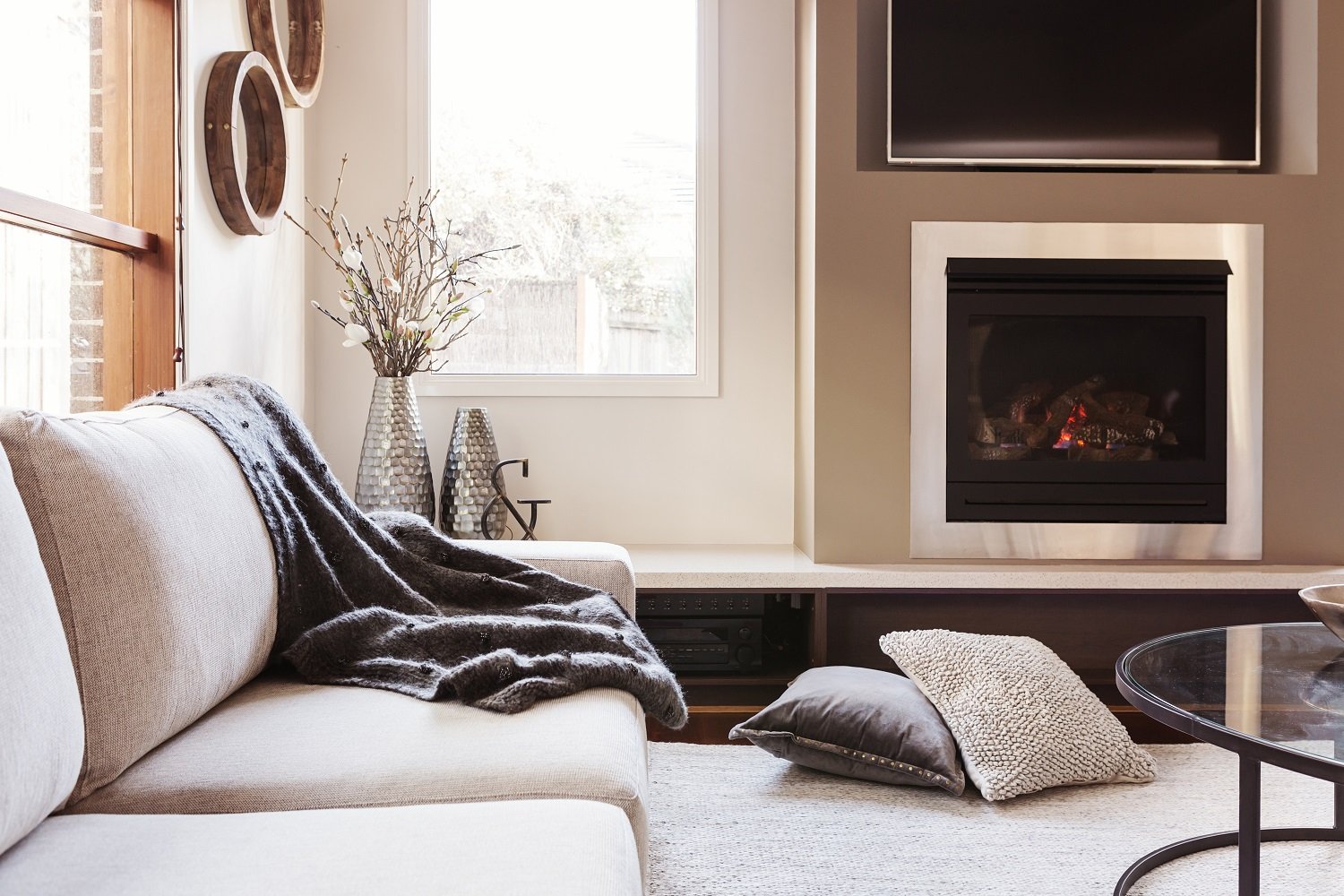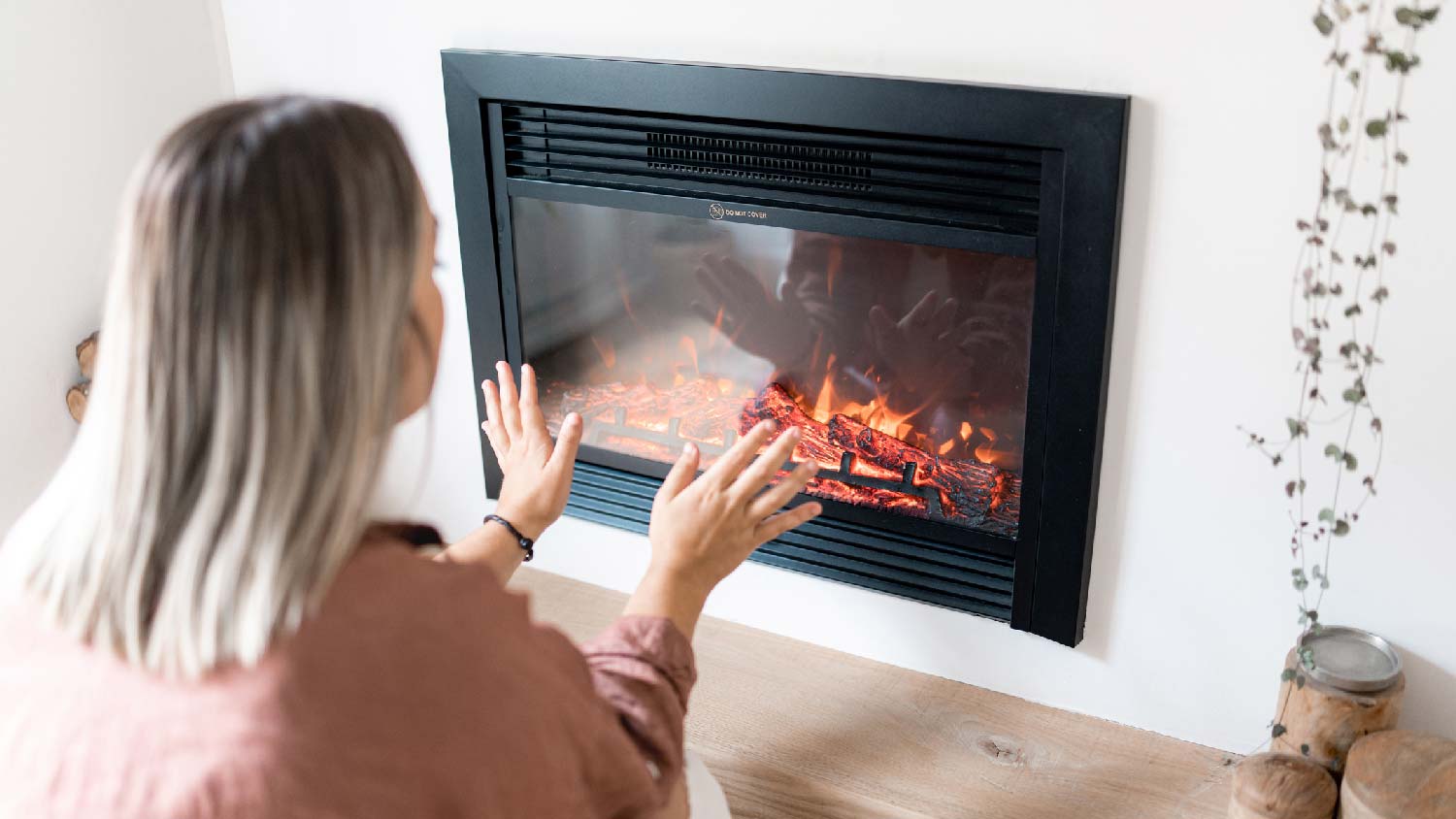How to Clean Soot From Your Fireplace in 7 Easy Steps
Cleaning stubborn black soot from your fireplace is simple if you have the right tools


- Broom and dustpan
- Vacuum
- Spray bottle
- Bucket
- 2 sponges or rags
- Water
- Liquid dish soap
- White vinegar
- Ammonia (optional)
- Newspapers
Fireplaces can make any home feel cozy, whether they're gas or wood-burning. However, they need regular cleaning to prevent a buildup of unsightly and unhealthy fireplace soot. Fortunately, learning how to clean soot from a fireplace isn’t complicated. All you need are a few household cleaning products and some elbow grease.
Before You Begin: Precautions
Soot particles are messy, and inhaling them can be harmful to health. To protect yourself and the fireplace surrounds, take the following precautions before you begin cleaning.
Ventilate the room to avoid trapping airborne soot particles.
Wear a dust mask (preferably an N-95 one for maximum protection).
Wear dish gloves, a long-sleeved top and long pants to prevent soot lying on your skin.
If soot does come into contact with your skin, wash it off immediately
Protect the floor and furniture near your fireplace by placing a drop cloth or two over them.
7 Steps to Cleaning Soot From Your Firebox
Allow Fireplace to Cool
 Photo: Jodie Johnson / Adobe Stock
Photo: Jodie Johnson / Adobe StockLearning how to clean black soot from inside your fireplace begins with allowing it to cool. Wait at least 12 hours after your last fire to allow your fireplace to fully cool down before you begin cleanup. If you vacuum up hot coals, they could destroy your vacuum and leave you with a literal hot mess.
Clear Debris and Vacuum Ashes
Once your fireplace is completely cold, remove the grate and andirons (the metal supports for firewood). Sweep up all of the ashes and debris in the firebox and toss it in the garbage can (again, make sure it’s cool to the touch).
Then, use a shop vac or a good vacuum with a brush attachment to suck up as much soot and dust as possible from your hearth and fireplace.
Spray Stains With Water
Fill a spray bottle with regular, plain old water and wet your fireplace, saturating it before applying a cleaning solution. This prevents the cleaning solution from soaking into it. You can either spray the entire fireplace with water or focus on specific problem areas. To prevent it from drying out as you work on the next steps, you can work in small areas at a time.
Mix Cleaning Solution
In a bucket, combine 1 gallon of warm water and 2 tablespoons of grease-cutting dish soap. This will be a very mild cleaning solution.
Scrub Fireplace
Dip a firm scrub brush into your cleaning solution and scrub your fireplace, making sure to work top to bottom to prevent dirty water from dripping down and leaving streaks on clean areas. You can wipe the area down with a wet sponge or rag to wipe away dirt or apply more cleaning solution as needed.
Rinse Off Solution
Take your water-filled spray bottle and spritz cleaned areas as you go. Use a clean sponge or rag to wipe down the surface to prevent drips.
Repeat as Needed
Keep scrubbing away if your fireplace is still stained with black soot, but don’t be too abrasive, as overzealous scrubbing can actually damage the surface. Mix fresh cleaning solution as needed and wipe it dry with a dry rag. Replace the grate and irons, and your fireplace should look as good as new.
How to Remove Soot From Fireplace Bricks
Using the steps above to remove soot from bricks in and around your fireplace is often enough, but if the brick needs extra cleaning, try one of the following methods.
Method 1: Using Vinegar to Remove Soot From Fireplace Bricks
Vinegar is a tough and effective natural soot cleaner.
Mix: Use a ratio of one part water to one part white vinegar.
Spray: Apply with a spray bottle to thoroughly wet all the brickwork and allow it to soak in for a few minutes.
Scrub: Use a soft-bristle brush or sponge to scrub in the still-wet solution. Work from the bottom to the top to prevent unsightly streaking.
Rinse: Use a sponge and warm water to remove the vinegar smell and soot residue. Adding baking soda to the water can help neutralize the vinegar’s acidity and lift any lingering sooty spots.
However, if you have an older fireplace with crumbling brickwork, stick with the mild detergent solution and some elbow grease. Acidic vinegar can further degrade the brickwork if the solution is too strong or not rinsed away properly.
Method 2: Using Ammonia to Remove Soot From Fireplace Bricks
To remove a heavy buildup of ingrained soot on fireplace bricks, you might need something stronger. You can use household ammonia to clean up tough soot stains, but this corrosive chemical needs careful handling.
Before starting, ensure the room is well-ventilated. Wear protective gloves, goggles, and a mask.
Mix: Dilute 1/4 cup of ammonia with 1 gallon of water in a cleaning bucket. Never add other chemicals, as you risk creating highly toxic gases.
Apply: Rub the solution into the brickwork with a sponge while wearing gloves.
Scrub: For tough stains, sprinkle on some abrasive powdered pumice and scrub in with a brush to help lift the soot.
Rinse: Thoroughly rinse the ammonia solution using a fresh bucket of warm water and a clean sponge.
If any stubborn stains remain, call a professional fireplace cleaner in your area. And if you’re worried about soot or creosote buildup in your chimney, which can cause dangerous chimney fires, hire a chimney sweep for professional cleaning.
How to Clean Fireplace Doors
Follow these cleaning steps to keep the glass door of a fireplace soot and smear-free.
Remove the glass (optional): If it’s simple to remove the glass from your fireplace door, it makes cleaning easier. Always wait until the fireplace (and glass door) are fully cool.
Protect the glass: Carefully lay the glass on a towel or other protective cloth.
Protect your fireplace surround: If you can’t remove the glass, place a towel or other cloth under the glass door to catch any soot and cleaning liquid that may drop.
Create your cleaning solution: Ash from a wood fire makes an effective, eco-friendly, economical, and gently abrasive cleaning product. Mix a little ash with warm water. Alternatively, you can use a solution of one part vinegar and one part water or a commercial fireplace glass cleaner. Avoid using abrasive cleaners, steel wool, or razors, as these can scratch the glass surface.
Scrub in the solution: Apply the solution with a piece of newspaper using circular motions. The newspaper prevents smears or scratches.
Rinse: Use warm water to rinse away the ash solution and dry with paper towels.
Replace the glass: If you removed the glass to clean it, fit it back into place, following the manufacturer’s instructions if they are available.
Cost to DIY Fireplace Cleaning vs. Hiring a Pro
If you have extra time on your hands, you can save money by cleaning soot from your fireplace yourself rather than hiring a professional to do it for you.
The materials needed to clean your fireplace, not including the chimney, will cost you under $50 at your local hardware store. The average cost of a professional fireplace cleaning ranges from $95 to $150, depending on whether or not the pro will need to clean your chimney as well. Contact a local fireplace cleaning professional for specific prices.















